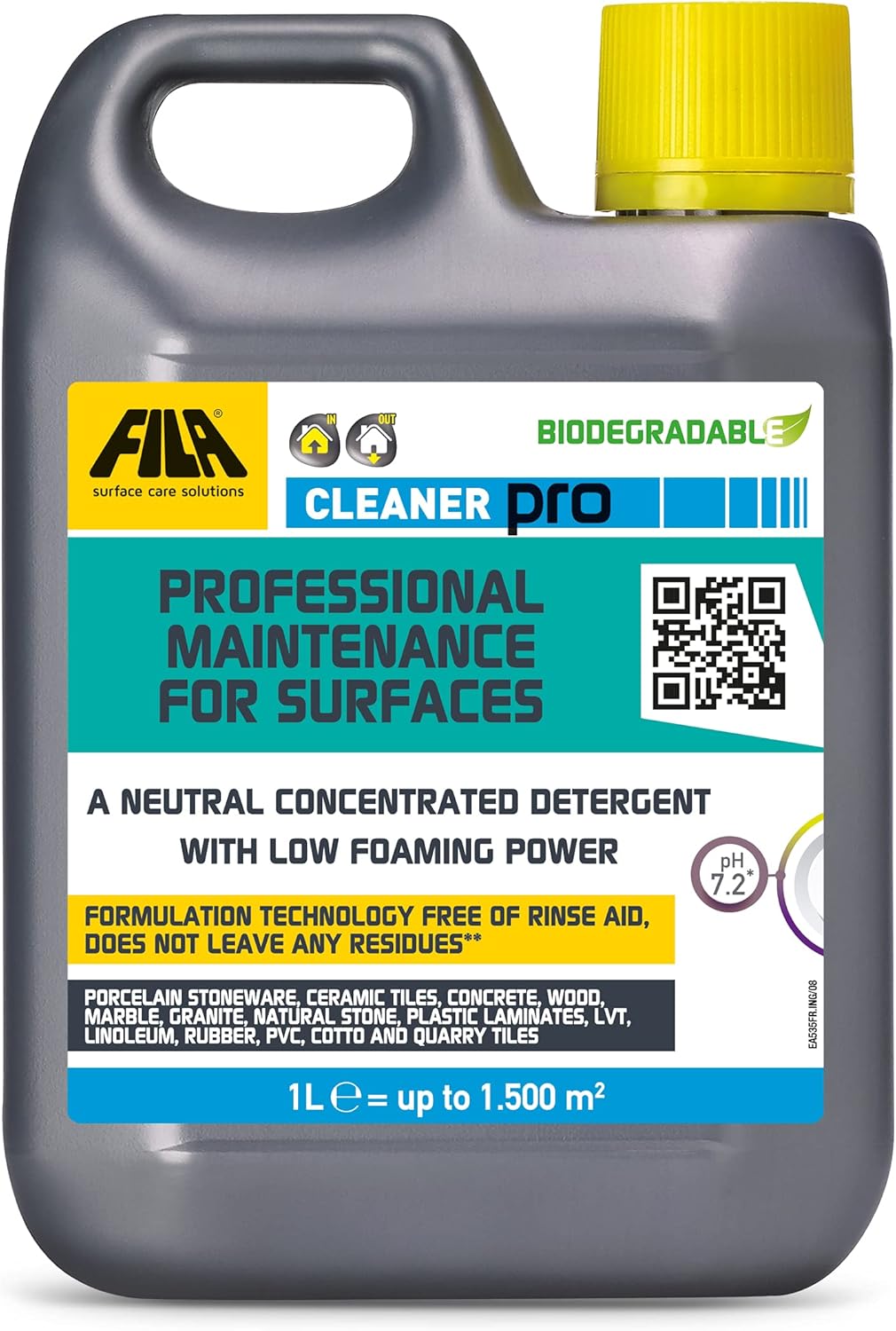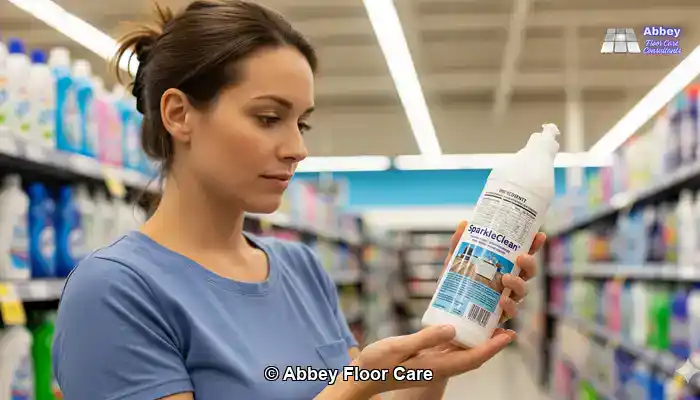
Last Updated on November 12, 2025 by David
Key takeaways from the article, “What Is the Best Product for Terrazzo Cleaning?
- Utilise pH-neutral cleaners for routine maintenance to avoid etching or dulling the surface, particularly when marble chips are present in the terrazzo mix.
- Alkaline cleaners are effective for entrenched soils, but must be rinsed thoroughly and resealed if left to dwell for prolonged periods.
- Avoid using acidic, bleach-based, or abrasive products, as these can cause permanent harm to terrazzo and affect its long-term visual appeal.
- Topical sealers are a viable option when properly maintained and reapplied, offering enhanced gloss and protection for areas with heavy foot traffic.
- Consistent maintenance with soft tools and prompt spill response helps preserve the finish and decreases the necessity for frequent deep cleaning.
Discover the Distinctive Qualities and Advantages of Terrazzo Flooring

What is Terrazzo Made Of? Unpacking the Unique Components of This Flooring Material
Terrazzo is a sophisticated composite flooring material, meticulously constructed by combining marble, quartz, granite, or glass chips into a robust cement or epoxy base. Following installation, the surface undergoes an intensive grinding and polishing process to achieve a sleek and decorative finish that enhances the elegance of any environment. Due to its natural stone composition, terrazzo is susceptible to harsh chemicals, necessitating a delicate cleaning approach to preserve its visual appeal over time. Understanding the intricate components of terrazzo is essential for homeowners, as it equips them to provide the specific maintenance required for optimal durability and aesthetic charm, thereby safeguarding their investment.
Pro Tip: Recommended Products for Daily Maintenance of Terrazzo

Fila Pro Floor Cleaner
|

LTP MPG Sealer H20
|

Vileda H2PrO Spin Mop System
|
Why Terrazzo Requires Special Care: Grasping Its Sensitivity to Cleaning Agents
Unlike ceramic or vinyl flooring solutions, terrazzo is inherently porous, allowing it to absorb liquids if not sealed correctly. The use of acidic cleaners, bleach, or abrasive tools can dull the surface or lead to permanent stains, resulting in expensive repair costs. To keep terrazzo floors looking their best, it is crucial to utilise pH-neutral products specifically designed for stone surfaces. Regular maintenance not only helps to maintain the floor's shine but also prevents long-term damage, ensuring that the beauty and durability of your floors are preserved for many years.
Preventing Common Mistakes in Terrazzo Floor Cleaning

Why Acidic Cleaners Are Hazardous: Exploring the Risks of Their Usage
Acid-based cleaning products, such as vinegar, lemon juice, or lime scale removers, have the potential to etch terrazzo surfaces, particularly those containing marble chips. Even a single application can result in dull patches or cause irreversible damage, thus compromising the floor's structural integrity. Homeowners often mistakenly believe that natural acids are safe for use, but terrazzo reacts differently compared to ceramic or porcelain tiles. Understanding these risks is crucial for preserving the long-term integrity of your terrazzo floors, ensuring they remain a stunning and valuable feature of your home.
The Dangers of Steam and Bleach: Safeguarding Your Terrazzo Floors
While steam cleaners may seem like a convenient option, the high temperatures and pressures involved can weaken sealants and force moisture into the underlying substrate, potentially causing damage. Bleach, being alkaline, can gradually discolour terrazzo over time. Both cleaning methods pose significant risks to the structural integrity of the flooring, particularly in older properties or areas where the sealant has become compromised. It is essential to consider safer alternatives for effectively and responsibly cleaning terrazzo surfaces.
How Abrasives Can Damage the Finish: Key Steps to Protect Your Terrazzo Flooring
Scouring pads, gritty powders, or stiff brushes can easily scratch the polished surface of terrazzo, leading to a loss of its reflective quality. Once scratched, the floor becomes increasingly challenging to clean and maintain. For any deep-cleaning tasks, always employ soft pads and non-abrasive tools specifically designed for stone surfaces. Protecting the finish is vital for long-term beauty and maintenance ease, ensuring that your terrazzo floors remain visually stunning for years, preserving their elegance and charm.
Selecting the Best Deep-Cleaning Product: A Comprehensive Guide

What Qualifies a Cleaner as Safe for Terrazzo? Identifying Secure Cleaning Solutions
Safe terrazzo cleaners are pH-neutral, non-acidic, and free from harsh solvents. Since terrazzo often incorporates marble chips, it does not respond well to either acidic or alkaline products. An effective balanced cleaner lifts dirt without causing deterioration to the surface or sealant. Always look for labels specifying compatibility with natural stone or terrazzo to ensure safe cleaning practices.
In cases where terrazzo floors are heavily soiled—particularly in high-traffic areas such as kitchens and hallways—standard pH-neutral cleaners may lack the strength necessary to dissolve embedded grime. Over time, oils, grease, and dirt can become entrenched deep within the porous surface, especially if the sealant has diminished, necessitating a more powerful cleaning solution to restore the floor's original aesthetic appeal.
Why an Alkaline Cleaner Is Sometimes Essential: When to Consider Stronger Cleaning Solutions
Alkaline cleaners are specifically formulated to penetrate organic soils, grease, and stubborn residues that neutral products cannot effectively eliminate. These solutions emulsify contaminants, allowing them to be washed away from the terrazzo’s pores swiftly. For deeply embedded grime, a more potent alkaline formulation may be essential to restore the floor’s original aesthetic, ensuring it appears at its best.
Rinse Thoroughly to Prevent Surface Damage: Ensuring Proper Care for Your Terrazzo Floors
While alkaline cleaners can be effective, they must be used with caution. Leaving them on the surface for an extended period can strip protective sealers or cause discolouration. After the suggested dwell time—typically between 5 and 15 minutes—thoroughly rinse the floor with clean water. Employing a wet vacuum or performing multiple mop passes ensures that no residue remains. Insufficient rinsing can lead to a chalky film or long-term dullness, detracting from the overall appearance of your terrazzo floor and potentially causing further maintenance issues.
Resealing May Be Necessary After Deep Alkaline Cleaning: Safeguarding Your Investment
If the cleaner required an extended dwell time to effectively break down soils, or if the floor was previously unsealed, it is advisable to reseal the terrazzo after cleaning. Alkaline products can open the stone’s pores, making it more vulnerable to future staining. Applying a breathable impregnating sealer helps restore protection and maintain the floor’s resilience against moisture and dirt, ensuring its longevity and beauty.
Your Ultimate Guide to Effectively Deep-Cleaning Terrazzo Floors
Preparing the Surface: Get Your Floors Ready for Effective Cleaning
Start by removing loose dust and debris using a soft-bristle broom or a vacuum set to hard floor mode. Avoid dragging furniture or using metal-edged tools, as these can scratch the surface. If any residual polish or grime remains on the floor, consider employing a safe terrazzo stripper before deep-cleaning to ensure optimal results, guaranteeing that you start with a clean slate for your maintenance efforts.
Safely Applying the Cleaner: Ensuring Effective Application Techniques
Mix your selected cleaner according to the manufacturer’s instructions. Apply it evenly across the floor using a microfiber mop or a soft applicator. Allow the solution to dwell for 5 to 10 minutes to loosen ingrained dirt, but take care to ensure it does not dry on the surface. Work in manageable sections to maintain control and achieve comprehensive cleaning while preventing any potential damage to the finish.
Best Practices for Agitation and Rinsing: Maximising Cleaning Effectiveness
Use a soft white pad or a slow-speed rotary machine equipped with a non-abrasive brush to agitate the surface effectively. This technique helps lift dirt from the terrazzo’s pores without causing scratches or damage. Rinse thoroughly with clean water, frequently changing the water to prevent the re-deposition of dirt. A wet vacuum can expedite this process and enhance results, ensuring a spotless finish that showcases the elegance of your terrazzo flooring.
Drying and Buffing for a Lasting Finish: Achieving an Impeccable Look
Allow the floor to air dry completely or utilise a dry microfiber mop to eliminate any residual moisture. Once dry, buff the surface with a clean white pad to restore a light sheen. If the floor still appears dull, it may be necessary to consider resealing or polishing, particularly in high-traffic areas where wear is more noticeable, ensuring your terrazzo continues to shine and impress.
Recognising When to Reseal Your Terrazzo Floor: Enhancing Longevity and Appearance
Signs Indicating Your Seal Has Worn Off: Identifying the Need for Resealing
If your terrazzo floor looks dull, absorbs water quickly, or shows signs of staining, the sealant may have weakened. A simple water-drop test can be conducted: place a few drops on the surface and observe closely. If the water darkens the stone or disappears rapidly, it is time to reseal your terrazzo floors to protect them from further damage and ensure they maintain their original beauty for years to come.
Selecting the Appropriate Sealer: Ensuring Optimal Protection for Your Investment
For homes in the UK, solvent-based impregnating sealers such as Lithofin Stainstop or Fila MP90 provide enduring protection without altering the appearance. These sealers penetrate the surface, effectively blocking moisture and stains while avoiding the formation of a visible layer. This method ensures that your terrazzo retains its natural beauty while being adequately safeguarded against everyday wear and tear.
How to Apply Sealer at Home: A Step-by-Step Guide for Optimal Results
Thoroughly clean the floor and allow it to dry for at least 24 hours. Apply the sealer evenly using a lint-free cloth or sponge, working in small sections to guarantee complete coverage. Allow it to absorb for the recommended duration, and then wipe away any excess. A second coat may be necessary for high-traffic areas to ensure optimal protection. Always ensure proper ventilation and adhere to safety instructions on the label during application for a safe and effective process.
Effective Maintenance Strategies for Terrazzo Floors Post Deep Cleaning
Weekly and Monthly Maintenance Tips: Keeping Your Floors in Prime Condition
To ensure terrazzo continues to look appealing, regularly dry mop with a microfiber pad to eliminate dust and grit. For weekly cleaning, use a diluted pH-neutral cleaner and avoid soaking the floor. Monthly, assess high-traffic areas for signs of wear and reapply cleaner as necessary. Prevent excessive wetting, which can weaken sealants over time and lead to further issues, thus ensuring the longevity and beauty of your floors.
Optimal Mops and Tools for Ongoing Care: Selecting the Right Equipment for Terrazzo Maintenance
Microfiber mops are ideal for terrazzo as they effectively capture fine particles without scratching the surface. Avoid sponge mops, which can push dirt into the pores and cause long-term damage. For larger spaces, consider a spray mop with refillable cartridges that allow for controlled application of stone-safe solutions. Always rinse mop heads thoroughly after use to prevent residue buildup, ensuring effective and safe cleaning.
How to Address Spills and Stains Promptly: Protecting Your Floors from Damage
Immediately blot spills with a soft cloth or paper towel. Avoid rubbing, as this can spread the stain and exacerbate the issue. For oily or pigmented spills, apply a small amount of stone-safe cleaner and rinse with clean water. If a stain persists, use a baking soda and water poultice, testing first to ensure it won’t affect the finish. Timely intervention prevents lasting marks and helps maintain the floor's fresh and inviting appearance, preserving its beauty for an extended period.
Common Questions About Terrazzo Floor Cleaning: Your Queries Addressed
Can I Use Vinegar on Terrazzo? Understanding the Risks Involved
No. Vinegar is acidic and can etch terrazzo surfaces, particularly those containing marble chips. Even diluted vinegar may result in dull spots or long-term damage. Always opt for a pH-neutral cleaner specifically formulated for stone surfaces to ensure the durability and longevity of your terrazzo floors, thereby protecting your investment.
What If My Floor Is Already Damaged? Exploring Restoration Options for Your Terrazzo
If your terrazzo has scratches, stains, or dull patches, deep-cleaning alone may not suffice to restore its appearance. Professional honing or polishing might be necessary to effectively eliminate surface damage. In some instances, resealing or applying a stone-safe polish can enhance the look, but restoration is typically the most effective approach for heavily worn floors, ensuring they regain their optimal aesthetic and value.
How Often Should I Deep-Clean? Recommendations for Regular Maintenance of Terrazzo Floors
For the majority of homes in the UK, deep-cleaning terrazzo every 6 to 12 months is generally sufficient. Areas experiencing high foot traffic, such as hallways or kitchens, may require more frequent attention to maintain their visual appeal. Consistent maintenance between deep cleans helps to extend the lifespan of the sealant and keeps the floor looking fresh throughout the year, ensuring your terrazzo continues to shine brightly and maintain its allure.
The Article What Is the Best Product for Terrazzo Cleaning first found on https://www.abbeyfloorcare.co.uk
The Article Best Product for Cleaning Terrazzo Surfaces appeared first on https://fabritec.org
The Article Cleaning Terrazzo Surfaces: Top Product Recommendations Was Found On https://limitsofstrategy.com
The Article Terrazzo Surfaces Cleaning: Best Product Picks to Use found first on https://electroquench.com

